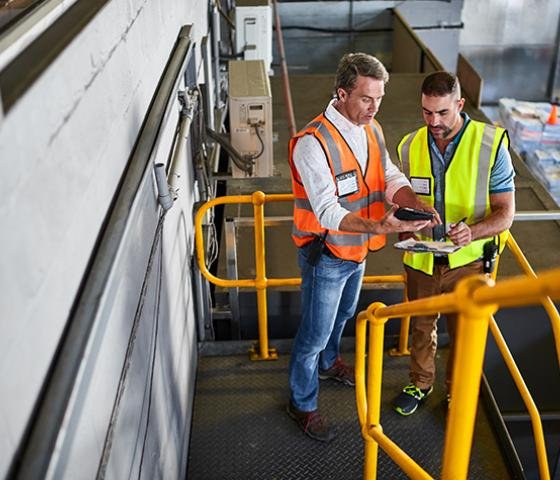Key takeaways
- Businesses can successfully lower transportation costs in the reverse logistics process by putting in place strong transportation management systems and using technology to optimize transportation routes.
- Businesses may reduce fuel usage, optimize supply chain efficiency, and streamline transportation operations with real-time visibility and tracking capabilities.
- Furthering financial savings and environmental sustainability can be achieved by investigating sustainable transportation choices including multimodal transportation and alternative fuels.
- In the end, working with third-party logistics providers can help firms optimize their reverse logistics procedures and cut expenses overall by providing useful experience, industry knowledge, and access to a larger network of transportation services.
- Businesses can improve their reverse logistics operations and achieve higher levels of efficiency and profitability by comprehending the effects of transportation costs and putting strategic solutions into place.

Introduction
To optimize operations in the current fast-paced business climate, it is imperative to comprehend how transportation costs affect reverse logistics. Excessive transportation costs can have a big impact on a company’s earnings, so it’s critical for them to research and plan ways to save costs. Businesses can decrease inefficient practices, optimize vehicle use, and streamline routes by putting in place effective transportation management systems. Furthering cost savings and environmental sustainability can be achieved by utilizing technology for route optimization and investigating environmentally friendly transportation choices like multimodal transportation and alternative fuels. Working together with third-party logistics companies is also a great way to take use of industry knowledge and a larger network of transportation resources. Through a comprehensive approach to reverse logistics transportation costs, companies can improve productivity, cut costs, and profitability in their supply chain operations.
Understanding the impact of transportation costs in reverse logistics
The cost of transportation is a major factor in reverse logistics. Businesses trying to optimize their reverse logistics operations must comprehend the significance of these charges. Excessive transportation costs might reduce earnings and render the operation ineffective as a whole. Through examining the effects of transportation costs, companies may pinpoint areas for development and put cost-cutting measures into place.
The financial strain that transportation expenses in reverse logistics inflict on companies is one of their principal effects. Shipping goods back to their original location might incur significant expenditures, particularly in cases where a high volume of returns is being handled. These expenses include of driver pay, packaging supplies, fuel costs, and vehicle upkeep and repairs. Furthermore, transportation expenses may also rise. due to factors such as distance, route complexity, and the need for specialized handling or equipment.
Reverse logistics transportation expenses also have an impact on the overall efficiency of the supply chain. Longer lead times for product returns might result from high transportation costs, which can cause delays in processing and restocking returned goods. Customers may become irate as a result, carrying costs may rise, and inventory shortages may occur. Businesses should strive to improve overall supply chain efficiency and streamline their reverse logistics procedures by gaining an awareness of the influence of transportation expenses.
Implementing efficient transportation management systems
Putting in place effective transportation management systems is one way to cut back on transportation costs in reverse logistics. These technologies assist companies in cutting down on inefficient procedures, increasing vehicle utilization, and optimizing transportation routes. Businesses may make better decisions about the planning and execution of transportation by utilizing technology and data.
Utilizing cutting-edge software to automate and optimize transportation procedures is a necessary component of effective transportation management systems. These solutions let firms to manage shipments, keep an eye on vehicle performance, and pinpoint areas for improvement by offering real-time visibility into transportation operations. Through route optimization and empty mile reduction, firms can decrease fuel consumption and lower total transportation expenses. These technologies can also assist companies in finding chances for mode shifting and consolidation, which will further optimize transportation costs.
By putting in place effective methods for managing transportation, companies can also enhance their customer service in reverse logistics. Businesses may give customers accurate and timely information about the progress of their returns using real-time visibility and tracking tools. Customers get more confidence and trust as a result, which raises customer satisfaction and loyalty.
Leveraging technology to optimize transportation routes
In reverse logistics, technology is essential for streamlining transit routes and cutting costs. Businesses can find the best routes for product returns by utilizing sophisticated route optimization software and technologies. This decreases delivery times, boosts overall business efficiency, and lowers transportation expenses.
Real-time traffic data and GPS tracking can be used to optimize transit routes. Businesses can monitor and evaluate traffic patterns, road conditions, and other variables that may affect the effectiveness of transportation with the use of these technologies. Businesses can minimize travel time and avoid crowded locations by adjusting routes in real-time by taking these considerations into account.
Software for route optimization represents another technology that can be utilized. These software programs employ algorithms to determine the best routes depending on a number of variables, including distance, fuel economy, and vehicle capacity. Businesses are able to design optimum routes that minimize transportation costs by providing particular criteria and limits.
Technology can be employed in reverse logistics to enhance vehicle usage in addition to route optimization. Transport vehicle performance can be tracked and monitored by organizations through the use of telematics devices and fleet management systems. This makes it easier to spot chances to increase vehicle usage, decrease idle time, and make the best use of the resources that are available.
Exploring sustainable transportation options
Businesses should investigate environmentally friendly transportation choices in reverse logistics in addition to cutting costs associated with transportation. In the long run, sustainable transportation can save money in addition to reducing its negative effects on the environment.
Using alternative fuels is one way to travel sustainably. Companies may want to think about utilizing hybrid or electric cars to deliver returned goods. Comparatively speaking, these cars use less energy and emit less pollutants than conventional gasoline or diesel-powered cars. Businesses may save fuel expenses and help create a more sustainable and environmentally friendly supply chain by implementing alternative fuel sources.
Using multimodal transportation is an additional sustainable transportation alternative. In order to carry goods, this entails merging several means of transportation, such as road, rail, and water. By maximizing routes and utilizing the advantages of each mode of transportation, intermodal transportation can assist in lowering transportation costs. Additionally, it lessens the total environmental impact of transportation and reduces carbon emissions.
In addition, companies should look into reverse logistics options for shared transportation and teamwork. Businesses can take use of economies of scale to lower their transportation expenses by collaborating with other companies or by using shared transportation networks. This strategy encourages resource sharing and sustainability in addition to helping to cut costs.
Collaborating with third-party logistics providers for cost-effective solutions
In reverse logistics, working with third-party logistics (3PL) companies can be an affordable way to cut shipping costs. Businesses can optimize their reverse logistics procedures and cut costs by working with 3PL providers, who specialize in logistics and transportation services.
Working with 3PL providers has its advantages because of their experience and understanding of the market. These service providers can provide insightful advice and best practices based on their vast experience managing transportation operations. They can assist companies in determining areas for development, streamlining transportation lines, and putting cost-cutting strategies into action.
A larger network of transportation resources can also be accessed by collaborating with 3PL suppliers. Because these suppliers frequently maintain a working relationship with carriers, warehouses, and other logistics partners, companies can benefit from their network and negotiate more favorable transportation rates. This can result in significant cost savings for businesses.
Additionally, 3PL suppliers can provide value-added services including inventory management, warehousing, and experience in reverse logistics. Businesses can lower the complexity and expenses involved in managing transportation operations in reverse logistics by outsourcing these services to a reliable partner and concentrating on their core capabilities.
Conclusions
In summary, it is clear that the effectiveness and financial success of reverse logistics activities are significantly influenced by transportation costs. Through comprehension of the effects of transportation costs and deployment of effective methods for managing transportation, companies can enhance supply chain efficiency by optimizing routes and cutting down on inefficient procedures. Businesses can further reduce expenses and environmental effect by investigating sustainable transportation options and utilizing technology to improve transportation routes. In order to optimize transportation operations, working with third-party logistics providers can also give affordable solutions and invaluable industry knowledge. Through a comprehensive strategy for handling transportation costs in reverse logistics, companies may improve productivity, cut costs, and increase profitability in their supply chain operations.

FAQ
How can logistics reduce transportation costs?
Logistics can use a number of techniques to lower the cost of transportation. Increasing vehicle utilization and streamlining transportation routes are two efficient approaches. Logistics can find the most cost-effective routes for product returns by utilizing technology and data, which lowers fuel consumption and overall transportation costs. Businesses may make well-informed decisions regarding the planning and execution of their transportation operations by putting route optimization software into practice and making use of real-time traffic data.
Investigating environmentally friendly transportation choices is another way logistics may lower transportation expenses. Using alternative fuels, such as electric or hybrid cars, which are more ecologically and energy-efficient, is part of this. In order to cut expenses and lower carbon emissions, firms should also think about multimodal transportation, which combines several modes of transportation. Logistics may help to a more environmentally friendly and sustainable supply chain over time in addition to making long-term financial savings by implementing sustainable transportation practices.
Another affordable way to save transportation costs is to work with third-party logistics companies. In addition to value-added services like reverse logistics know-how, 3PL suppliers have access to a larger network of transportation resources and industry expertise. Logistics can lower expenses related to managing transportation operations by streamlining processes, negotiating advantageous shipping rates, and concentrating on core capabilities through partnerships with 3PL providers.
In conclusion, by examining sustainable transportation choices, working with outside suppliers, and streamlining routes, logistics can successfully lower transportation expenses. Businesses may increase productivity, save costs, and boost profitability in their supply chain operations by putting these techniques into practice.
How can reverse logistics reduce costs?
There are several ways that reverse logistics might cut expenses. One approach is to put effective transportation management systems in place, which can save needless spending, maximize vehicle use, and optimize routes. Businesses can determine the most economical transportation options for managing returns by utilizing technology and data, which eventually lowers overall transportation expenses.
Examining eco-friendly transportation choices is another approach to cut expenses in reverse logistics. Businesses can reduce fuel costs and their environmental impact by using alternative fuels, including electric or hybrid vehicles. Additionally, by effectively utilizing several modes of transportation, intermodal transportation can help cut costs and streamline operations.
Reverse logistics cost reduction also heavily relies on working with third-party logistics providers. Businesses can gain access to value-added services that can improve operations and reduce costs, a larger network of transportation resources, and industry experience by working with 3PL providers. This partnership may result in lower costs, more profitable reverse logistics operations, and more effective transportation procedures.
In conclusion, there are a number of practical strategies to cut costs in reverse logistics, including putting in place effective transportation management systems, looking into environmentally friendly shipping solutions, and working with outside logistics companies. Businesses can increase productivity, reduce costs, and boost profitability in their supply chain operations by implementing these tactics.
How can reverse logistics reduce costs?
Reverse logistics problems must be solved with initiative and planning. Implementing efficient collaboration and communication across all parties involved in the reverse logistics process is one strategy to overcome these issues. Businesses may ensure a seamless flow of returned products, optimize operations, and rapidly address issues by cultivating excellent connections with suppliers, consumers, and partners.
Investing in technology and data analytics is another crucial tactic for gaining understanding of and visibility into reverse logistics operations. Businesses can pinpoint areas for improvement in the reverse logistics process as well as bottlenecks and inefficiencies by utilizing sophisticated data tracking tools and analytics software. Businesses may improve overall productivity, optimize operations, and make well-informed decisions with this data-driven strategy.
Reverse logistics problems must also be overcome via constant development and adjustment to shifting consumer needs and market trends. Businesses can adapt their strategies, procedures, and technology to match changing consumer demands and preferences by remaining adaptable and flexible. Businesses may efficiently manage difficulties in reverse logistics and stay ahead of the curve by adopting new technologies and embracing innovation.
In summary, overcoming reverse logistics obstacles calls for a diversified strategy that incorporates technology adoption, efficient communication, and a dedication to ongoing development. Businesses can successfully manage their supply chain, streamline operations, and negotiate the challenges of reverse logistics by putting these concepts into practice.
What handling costs are included in reverse logistics?
Reverse logistics handling costs include all of the costs associated with handling returned goods. These expenses could include labor for processing returns, supplies for repackaging products’ packaging, shipping costs for returning goods, and storage fees for keeping returned goods in warehouses. In addition, there can be expenses for returning goods to be inspected, tested, and refurbished as well as expenses for discarding or recycling broken or unsaleable goods. Businesses can efficiently lower total expenses in their reverse logistics operations and increase profitability by monitoring and decreasing these handling costs.
Hope this article was helpful for more check out our previous blog post by clicking here

